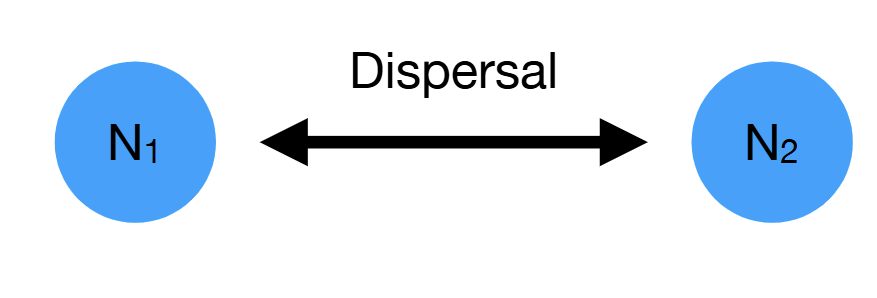Spatial ecology
1/21
There's no tags or description
Looks like no tags are added yet.
Name | Mastery | Learn | Test | Matching | Spaced |
|---|
No study sessions yet.
22 Terms
What is biogeography?
Science in which studies the distribution of species and diversity across spatial scales
Quote from Schoener, 1976 about Species-Area Relationship (SAR)
“One of community ecologys few genuine laws”
Equation for Species-Area Relationship (SAR):
S=cAz
log(S)=zlog(A)+log[c]
How do we explain the patterns of Species-Area Relationship (SAR)?
Think of it in terms of colonisation [c] and extinction (e)
Equation for the theory of islands biogeography:
S=cSp/(c+e)
What happens if islands increase in size?
Increase in distance
What are metapopulations?
A larger unit made up of a group of local populations or subpopulations
What is key in metapopulations?
Dispersal between local patches
Levins metapopulation model?
dN/dt=cN(1-N/T)-eN
What are the assumptions of occupancy models:
1)There is large number of patches
2)Each patch has identical c and e rates
3)c and e are uncorrelated across patches
4)They ignore population sizes and consider only the presence or absence of the species in a patch
Assumptions in the dynamic metapopulations:
1)When each local population is considered as changing in abundance through time
2)Dispersal is modelled explicitly
3)Space can be considered either discrete or continuous
Population growth equation with dispersal:
N1,t+1=N1,tf(N1,t)+mN2,tf(N2,t)-mN1,tf(N1,t)
N2,t+1=N2,tf(N2,t)+mN1,tf(N1,t)-mN2,tf(N2,t)
Which is the term the represents arriving from other patces and the term that represents leaving the patch from the population growth equation with dispersal?
mN2,tf(N2,t) and mN1,tf(N1,t)=Arriving
-mN1,tf(N1,t)/-mN2,tf(N2,t)=Departing

What does local mean in terms of different spatial scales?
Each single patch
What does regional/global mean in terms of different spatial scales?
Collection of/all patches
What is metapopulation synchronisation?
When local populations oscillate in synchrony
Can dispersal be density dependent and density independent?
Yes
What does continuous spaces vs discrete space mean?
Individuals leaving the local populations depend on some fitness based rule
Dispersal ca be either what?
Natal or a breeding process
What does natal mean?
Move away from patch born into
What does breeding process mean?
Move to different patches at different breeding attempts
Population growth equation with dispersal and heterogeneity:
N1,t+1=N1,tf(N1,t,ε1)
N2,t+1=N2,tf(N2,t,ε2)